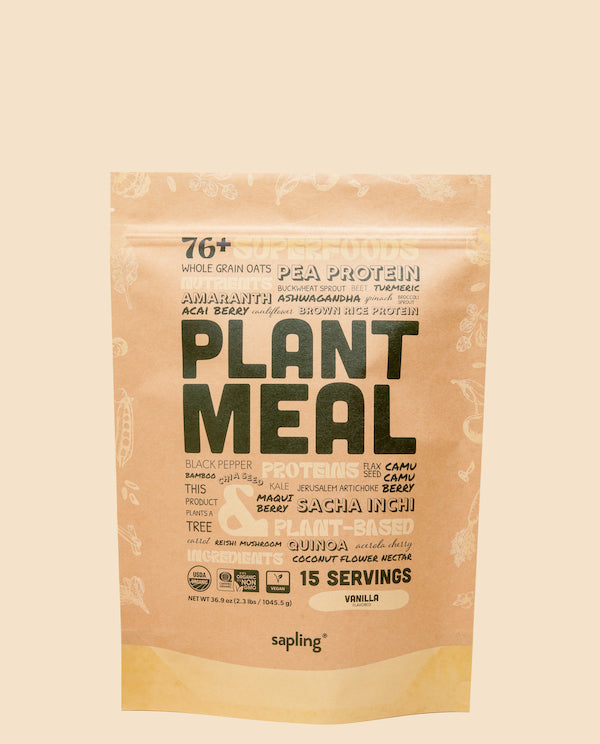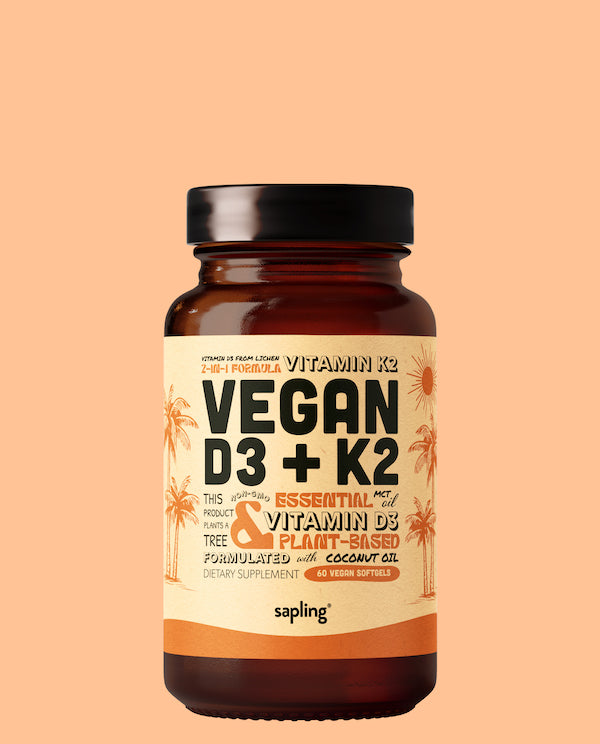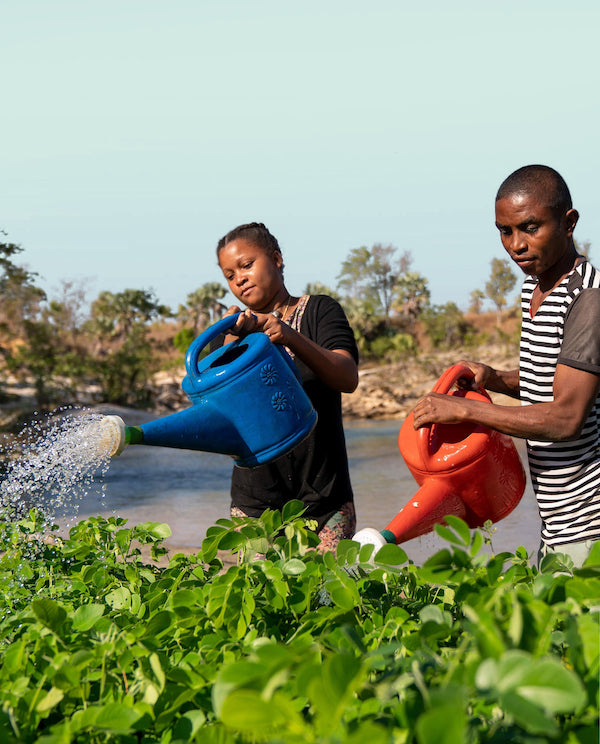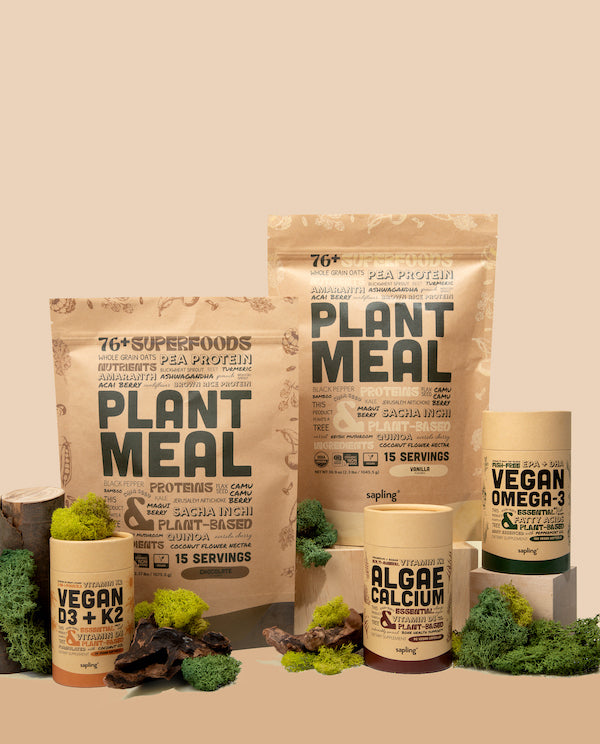Frequently Asked Questions
Frequently Asked Questions
We want you to ask questions. See some of our most frequently asked questions below.
Shipping & Returns
How much is shipping?
What is your return policy?
We love the products we make and we stand by them. If you don't completely love it, let us know within 30 days of your first delivery for a full refund, no questions asked.
If you have issues, simply contact the Sapling Team at support@takesapling.com, let us know what happened, and we'll do everything to take care of you.
Where do you ship?
We ship to all fifty US states, as well as verified addresses in US territories. All shipping is free.
Do you ship internationally?
We currently only ship to the United States, but we hope to open up deliveries to more international locations in the future.
How long will it take for my order to arrive?
The processing time for each order varies, but we ship out all orders within one to three business days typically.
Your order will arrive 3-7 business days after shipping.
How can I track my order?
We send tracking information via email for all orders once they have been shipped and scanned.
Please note that it often takes the service carrier 24-48 hours to scan a package and update the tracking information within their system. Your order has likely shipped and is on its way to you. You should see an update on tracking within 2 business days of shipment.
Do you offer exchanges?
Unfortunately, we cannot offer exchanges, unless the product contents have arrived damaged. If your product arrived damaged, please email us at support@takesapling.com.
Planting
What is One Bottle, One Tree?
For every bottle purchased, one tree is planted. If you order multiple bottles, we will plant the corresponding number of trees.
Why plant trees?
Planting trees is highly beneficial for both people and the environment, bringing benefits to the people of threatened lands and the environment.
Deforestation has reached record levels. Large-scale slash and burn practices, unsustainable agriculture, to daily destruction of community forests. Every minute approximately 27 soccer fields are destroyed, which adds up to nearly 18.7 million acres of forest lost every year. For example, in Madagascar, only 10% of the original forest remains. This is just one of dozens of forests that have been decimated. The most impacted regions of deforestation are typically highly poverty-stricken and underdeveloped. Members of impoverished communities are often forced to destroy their local environment to survive, bringing long-term consequences like severe flooding, erosion, and desertification. Deforestation leads to even worse devastation.
Trees are not only essential to the environment and wildlife, they also directly impact the humans in those regions. Trees provide clean air, a habitat for biodiversity, erosion control, timber, employment, food, and help to fight climate change. Reforestation leads to restoring animal habitats, restoring local rainfall patterns, rising water tables and improving water purity, halting flooding and soil erosion, improving soil quality, increasing crop yield, stabilizing farms and local economies, and decreasing extreme poverty. Planting trees is one of the most impactful acts of conservation available.
What is Eden Reforestation Projects?
Where are the trees planted?
Trees are being planted in 8 countries and 174 project sites. Our planting partner's project regions include Nepal, Madagascar, Haiti, Indonesia, Mozambique, Kenya, Honduras, and Nicaragua. Depending on the project or planting season, our planting partner chooses the most appropriate location at that time.
Can I pick where my tree is planted?
Currently, we do not have the capability to allow users to choose where their tree is planted. A number of external factors which are dynamic and quickly changing make this difficult, such as weather, available trees, employment needs in local communities, and areas available for planting.
What kind of trees are planted?
Only native species are planted, which vary from area to area. Invasive species are never introduced or planted on any of our planting partner's project sites. A percentage of agroforestry species are planted for sustainable community use, to prevent the community from going into newly restored forests. Learn more
What planting methods are used?
Singling or farmer managed natural regeneration, seed balls, seedling nursery, bare root transfers, and mangrove propagule planting. One or more methods are used depending on the region's native species. Learn more
How do I know the trees won't be cut down?
Our planting partner makes every effort to ensure the forest planted becomes permanent and sustainable. They work carefully with all levels of government to secure written agreements designating the restoration sites as protected in perpetuity. They do not plant in logging areas. Local villagers are hired to plant the trees, alleviating extreme poverty and giving them an economic incentive to ensure the wellbeing of restoration projects. This cultivates a sense of "ownership" over the trees and restored forests in the villagers.
Many trees planted are designed to be cut back periodically, with a minimum of 10% of trees planted being agroforestry species. Agroforestry species include fruit, fodder, and construction species to provide food security and meet human needs, becoming a source of sustainable income. Our planting partner hires forest guards as part of the labor force to protect reforestation sites.
When is my tree planted?
At the end of every three months, we compile the number of trees to be planted and our planting partner distributes them amongst the countries according to a number of factors. Planting season, need for trees, space, employment needs, available trees and labor are all factors that need to be considered during planning.
Can you show proof of planting?
Yes, please see our certificate of trees planted above. You can also contact our planting partner and verify with them that our contributions have been made. Additionally, our partners have established monitoring and evaluation processes to track where and by who the actual number of trees have been planted. Data is digitally collected and processed to identify problem areas.
Where are the seeds/saplings sourced from?
Most of our seeds are collected by local villagers from nearby remnant forests. When required to supplement, seeds are purchased from local, trusted seed banks. Our planting partner never purchases seedlings; they grow their own in our nurseries to ensure quality and germination rates.
Who owns the trees?
The vast majority of the trees at Eden Reforestation Project sites are owned by the local communities who actively participated in the restoration of their regional forest during their employment period with Eden. The common (but much smaller exception) is when agroforestry trees are planted at small plot farmer sites where the land is owned by the local farmer. In such cases, the small plot farmer owns the trees along with the proceeds from the trees.
Are the trees planted on publicly or privately-owned land?
The majority of Eden Reforestation Projects’ forest restoration projects occur on government-owned land that is under the direct authority of the local community. Agroforestry efforts typically occur at sites owned by small scale farmers. The one consistent determining factor within each nation is that Eden has established legal Government Associations and/or Non-Government Organizations, which provide the authority to operate effectively and in coordination with all the essential Regional and Local governance agencies.
Plastic Negative
What does Plastic Negative mean?
By going Plastic Negative with rePurpose Global, we are dedicating a percentage of each product we sell to fund the removal and recycling of twice as much plastic waste from nature as we use in our packaging. Under our Plastic Negative Certification, all of our products will carry a negative plastic footprint.
Through our partnership with rePurpose Global, we are supporting Taka Taka Solutions in Kenya to employ and empower marginalized waste workers to ethically reclaim and dispose of low-value plastic waste. This is plastic that would otherwise be landfilled, burned, or flushed into waterways and oceans.
Does this positively impact communities?
Waste worker communities who work with rePurpose Global’s partner organizations form the backbone of our Plastic Negative Certification. As you may know, millions of workers are engaged in informal recycling efforts across cities in the developing world - from Nairobi and Rio de Janeiro to Mumbai and Jakarta, they play a crucial role in dealing with the consequences of our consumption. Yet, their environmental work remains unsung and these marginalized communities barely earn livable wages. Many of them are children who weather harsh working conditions and are stuck in a cycle of abject poverty.
Your sapling purchase is helping rePurpose Global and its waste management partners to add crucial income streams for informal waste workers and their families. Through our Plastic Negative contributions, rePurpose Global pays ethical wages to waste workers for collecting hard-to-recycle, low-value plastic waste items (e.g. chips wrappers). These are items for which they don’t receive compensation in the current recycling market. Our partnership with rePurpose Global also funds their emergency food provision campaigns, as well as healthcare initiatives, educational programs, and more, all of which support the wellbeing of vital waste worker communities. In this way, waste workers are fairly compensated for their important work of diverting plastic waste that would otherwise pollute our natural world and contribute further to the current ecological crisis we face.
Why are you still using plastic?
How is your environmental and social impact verified?
To ensure that we are creating genuinely positive impact, rePurpose Global employs strict verification measures. They conduct spontaneous spot-checks at recycling facilities, provide detailed reports on plastic recovery and offset, and ensure that their Plastic Offset Protocol is followed with total precision. The Protocol consists of operational guidelines that help waste management partners carry out their recycling operations in an ethical and efficient manner, ultimately maximizing our positive impact on the ground.
My purchase is happening here. Why are your Plastic Negative contributions going elsewhere?
Our waste may be generated here, in United States, but a majority of it ends up being shipped out of sight to be dealt with in the developing world. Developing nations on the receiving end typically lack the necessary infrastructure to handle more waste than their own, which makes them weak links in our global waste ecosystem. In fact, 90% of plastic pollution in the oceans today stems from just 10 rivers, 8 of which are located in Asia.
Although these countries might be thousands of miles away, a lack of resources there results in waste ending up back on our plates, here in United States. This is how we know that our plastic problem is not country-specific. It’s global. And it’s growing exponentially, with developing countries bearing the brunt of it all. To solve this problem on a global scale, we need to empower plastic waste innovators in countries that have been forced to take on more waste than they can manage.
Is plastic negativity a long-term solution that actually solves our ocean plastic epidemic?
Let’s face it. Our world is simply not dedicating nearly enough money to address the greatest challenge facing our humanity: climate change. Today, governments are either slow or unwilling to take decisive action. Institutional investors do not see the returns they need to aggressively deploy cash and philanthropy is simply not enough to make a dent. To stand a chance of avoiding humanity’s oblivion, our world desperately needs businesses to scale up solutions across every climate challenge, today. Plastic Negativity is one such solution. It has the potential to mobilize billions of dollars of financing and close the $50+ billion/year cash gap in one of these challenges: plastic pollution.
Every dollar of our Plastic Negative contributions is invested in improving and expanding waste management infrastructure globally. We’re strengthening existing waste management systems, allowing them to take on even more plastic waste which would have otherwise polluted the outdoors.
However, even given the huge impact of our Plastic Negative Certification, sapling is only one brand. We cannot single-handedly end plastic pollution. To truly solve this crisis, we need big brands to step up. By going Plastic Negative ourselves, we hope to ramp up the pressure on larger brands to step up and join the plastic waste revolution.
Why solve plastic pollution? Isn’t climate change a more pressing issue?
It's a minimally publicized fact that plastic pollution is a major contributor to climate change. These two deeply worsening environmental concerns are not mutually exclusive—they influence each other.
Oil, natural gas, and coal are the main ingredients of plastic. Emissions from these materials during plastic production is an enormous chunk of global fossil fuel emissions. Despite these harmful effects, Petrochemicals—chemicals derived from fossil fuels and used to make materials like plastics, fertilizers, and synthetic rubber,—are rising in popularity. They’re expected to account for half of the world’s carbon budget (i.e. how much carbon we can emit every year while avoiding an atmospheric temperature rise greater than 2°C). Emissions from petrochemicals will also account for more than a third of the global growth of oil demand by 2030 and nearly half by 2050 — that’s more than trucks, aviation and shipping combined.






